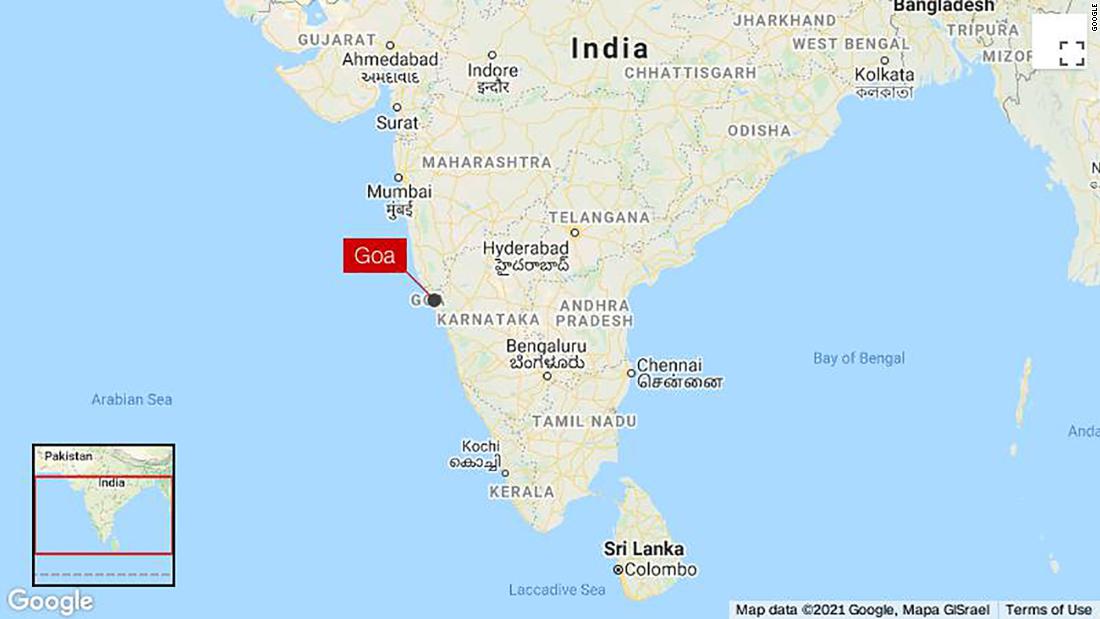Crisis in India: is the third wave of covid-19 near?
2:04
New Delhi (CNN) -
In the southwestern Indian state of Goa, one in two people who are tested is positive for COVID-19.
That makes it the state with the highest positivity rate nationally, as the virus spreads across the country.
And that's only among people being tested, which means that the infection rate among the untested population may be higher.
On Friday, the state hit a new record high positivity rate of 51.4%, Goa Health Minister Vishwajit P. Rane said, suggesting that a total lockdown may be necessary to contain the spread of the virus.
As of Friday, about 690,360 tests had been conducted in the state, according to the state Press Information Office.
"That is the need of the moment," he said, adding that the state prime minister was "seriously considering" a lockdown.
“We have had problems with the oxygen supply and other problems.
We need to reduce the positivity rate.
That is the only way forward.
India's second wave hit its major cities and populous states hard.
Cases in the capital New Delhi began to rise in late March, accelerating rapidly in April, and as the virus spread from state to state, other parts of the country began to see their own increase in cases, sometimes weeks after central critical points.
The US CDC classifies variant B.1.617, first detected in India, as a variant of interest
Goa, a tourist destination known for its beaches, is home to approximately 1.5 million people, a number that has likely increased since the last census in 2011. The state saw its rebound begin in early April, as Delhi already he was struggling.
But infections increased exponentially in the past two weeks.
Goa recorded more than 3,800 cases on Thursday, its highest daily figure so far.
advertising
The increase has raised alarm among authorities as they prepared for the kind of calamity unfolding in other states.
Schools, bars, gyms, cinemas and other public spaces are closed and political and social gatherings are prohibited.
The government has encouraged people to work from home and imposed restrictions on the capacity and opening hours of restaurants and shops.
The state's health system "is already overloaded," Rane said.
"We are doing everything possible," he added.
"We have improved our testing facilities so that we don't have to wait for someone to show symptoms to do the test."
The state is also in the process of acquiring equipment to perform genome sequencing, to determine which strain of the virus was traveling in the community and whether the variants might be spreading.
"We also found that the infection rate for this strain is very high and this is creating a lot of problems," he said.
The complacency of the second wave
Covid-19 cases increase 1,200% in Nepal 3:13
The increase in Goa, and the second wave in general, is related to flexible covid rules during winter, experts say.
India's first wave peaked in September and cases began to decline towards the end of the year.
Earlier this year, many states had relaxed their measures, inter-state travel had resumed, and people were largely going about their daily lives.
Devastating COVID-19 crisis in India - Prime Minister Narendra Modi could have prevented it, critics say.
But he didn't
The complacency of the country, and the feeling that the worst of the pandemic had passed, meant that the second wave hit much harder because the authorities and public health systems were not prepared at all.
But the problem may have been even more pronounced in popular travel spots like Goa.
"There were no restrictions of any kind (from December to February), and that's something we should have looked at at that time," Rane said.
“Goa was one of the most favored destinations and people used to come.
And at that point, we found that people were not following the (guidelines) and protocols.
The looser rules and the winter descent in some cases coincided with Diwali, the Hindu festival of lights and one of the largest annual celebrations in the country, when people traveled to Goa from all over India.
"Everybody took things for granted," Rane said.
“No one was following social distancing.
Masks are something that cannot be removed.
The increase in tourism, especially during the festival period, led to potential "wide-spread events," he said.
Now the state is paying the price, he said, as authorities scramble to respond to the surge in cases.
State and federal authorities have built new covid treatment centers and ICU facilities, including one with a 20,000-liter oxygen tank.
They are looking to bring in interns from the state medical school to assist in healthcare facilities.
The university's exam room, located in the city of Bambolim, has been converted into a covid room with 150 beds and medical oxygen.
Covid-19 cases skyrocket in Nepal and it is feared that the outbreak could be the same as that in India
Help from other states and countries has begun to arrive.
On Friday, Goa's customs agency released images of the "first shipment of oxygen concentrators" arriving in the state, as well as boxes of covid vaccines and test kits.
Dozens of countries began shipping medical supplies to India in late April, but the government offered little transparency on the whereabouts or distribution plan of the supplies until this week, as local media and foreign donors began to question where. help was directed.
Authorities responded to the criticism this week, denying any delay in distribution.
The Government "continues to effectively allocate COVID-19 supplies received from the global community to states and (union territories)," the Health Ministry said in a statement Thursday.
It is not clear what day the distribution began.
However, the ministry acknowledged that it took seven days, from April 26 to May 2, to develop the guidelines on how to allocate and deliver the aid.
Covid-19

